When I was about 5 years old, my family squeezed into a minivan and took a trip through the English countryside. I have a lot of scattered memories from that vacation, among them mist, cobblestones, and seeing this picture on the back of some tourism brochure and being scared sh*tless by it.
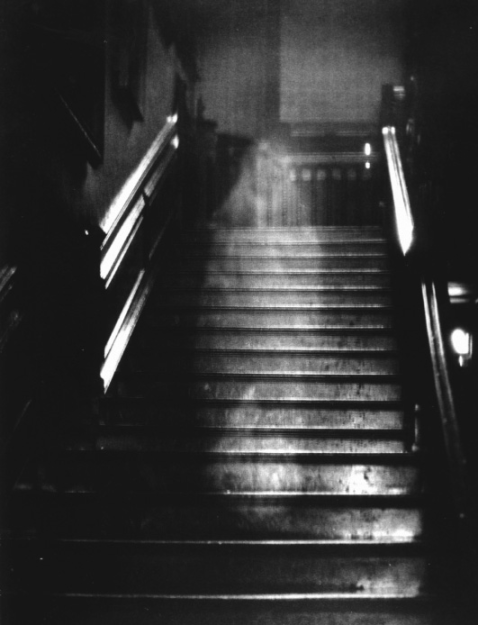
I never knew the story behind the photo–to be honest, had forgotten about it entirely–I until this week, when happened upon it again by chance. I knew then that I was fated to write this blog post.
The photo’s subject is a spirit called the Brown Lady of Raynham Hall, so named for her customary 18th-century brown brocade dress. It’s not surprising that I stumbled across her (I’m embarrassed I haven’t covered her already); her photo is among the most famous paranormal images in the world.
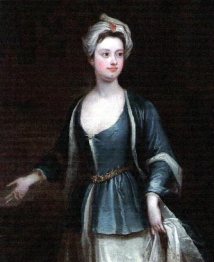
Dorothy in life.
Let’s start at the beginning. Our most fearsome lady is reported to be Dorothy Walpole (1686-1726), sister of the first Prime Minister of England and 13th child of a Whig member of Parliament. Dorothy fell madly love with one Lord Charles Townshend, who loved her in return. But when Dorothy asked her father for permission to wed, he refused, fearing that people would assume he had arranged the marriage for his own monetary gain. So Lord Townshend went off to marry someone else, leaving Dorothy alone.
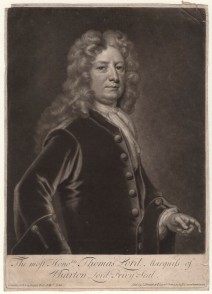
The notorious rake, apparently.
Enter Lord Thomas Wharton, a politician and rake “void of moral or religious principles.” It’s unclear if Dorothy actually had an affair with Wharton, or if their relationship was nothing more than a mild flirtation. It’s possible that she went for it–after all, she’d lost the man she loved and Wharton was a smart, charming dude willing to comfort her. But Wharton was married and kind of a douchebag, and theirs could not have been a long-term thing.
Then Lord Townshend’s wife died, and suddenly he was available again. He hadn’t heard about the business with Wharton, and asked Dorothy to marry him anew. Dorothy’s father was no longer around to get in the way, and she gladly accepted.
Now, I feel obligated to mention that contemporary sources–as well as recent documents uncovered by the descendents of the Townshends–indicate that the two’s 13 years of marriage were happy and normal. But if crime television has taught us anything, it’s that a cheerful facades can hide terrible secrets. According to legend, the Townshends had terrible secrets.
Lord Townshend, love of Dorothy’s life, was none too happy when he finally discovered that she’d hooked up with Wharty-poo (never mind that he himself had abandoned her to bang another woman). Some versions of the story go that she was still hooking up after she and Townshend had married, which would have been a bold move, considering her husband’s violent temper. However it went, Townshend took his revenge by locking Dorothy away, refusing to let her even see her children.
Eventually, she died. Officially, the cause was smallpox. Unofficially, people wondered if Townshend hadn’t pushed her down the stairs, or worse, if the funeral was a sham and he wanted her to die alone, shut up in Raynham Hall. Either way, no one would ever see Dorothy alive again.
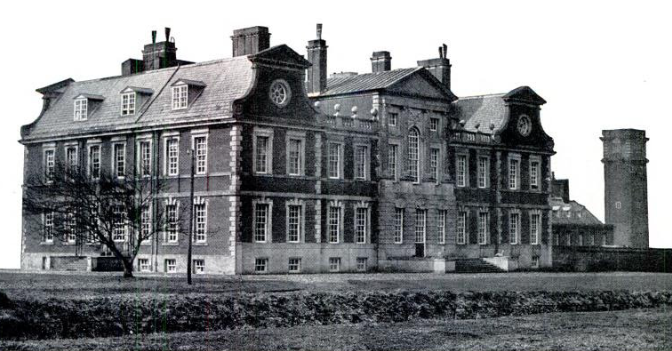
Raynham Hall.
About a century later, one of Townshend’s descendants held a Christmas party at Dorothy’s old estate. As they headed to bed, two guests were surprised to see a woman standing at the end of the hall, wearing a very dated brown brocade dress. Before they could approach her, she faded out of sight.
They might have assumed that they had been seeing things. But then, the next day, one of them ran into the woman again, this time face-to-face. Her pale skin all but glowed in the dark, and her eyes had been replaced by dark, gaping holes.
When this story came out, several servants quit and abandoned the premises. The legend of the Brown Lady had begun.
There were, of course, detractors. One was author Frederick Marryat, who decided to stay in the haunted section of Raynham Hall to prove how bunk the ghost stories were. Here’s his daughter’s account of how that went:
…he took possession of the room in which the portrait of the apparition hung, and in which she had been often seen, and slept each night with a loaded revolver under his pillow. For two days, however, he saw nothing, and the third was to be the limit of his stay. On the third night, however, two young men (nephews of the baronet), knocked at his door as he was undressing to go to bed, and asked him to step over to their room (which was at the other end of the corridor), and give them his opinion on a new gun just arrived from London. My father was in his shirt and trousers, but as the hour was late, and everybody had retired to rest except themselves, he prepared to accompany them as he was. As they were leaving the room, he caught up his revolver, “in case you meet the Brown Lady,” he said, laughing. When the inspection of the gun was over, the young men in the same spirit declared they would accompany my father back again, “in case you meet the Brown Lady,” they repeated, laughing also. The three gentlemen therefore returned in company.
The corridor was long and dark, for the lights had been extinguished, but as they reached the middle of it, they saw the glimmer of a lamp coming towards them from the other end. “One of the ladies going to visit the nurseries,” whispered the young Townshends to my father. Now the bedroom doors in that corridor faced each other, and each room had a double door with a space between, as is the case in many old-fashioned houses. My father, as I have said, was in shirt and trousers only, and his native modesty made him feel uncomfortable, so he slipped within one of the outer doors (his friends following his example), in order to conceal himself until the lady should have passed by.
I have heard him describe how he watched her approaching nearer and nearer, through the chink of the door, until, as she was close enough for him to distinguish the colors and style of her costume, he recognised the figure as the facsimile of the portrait of “The Brown Lady”. He had his finger on the trigger of his revolver, and was about to demand it to stop and give the reason for its presence there, when the figure halted of its own accord before the door behind which he stood, and holding the lighted lamp she carried to her features, grinned in a malicious and diabolical manner at him. This act so infuriated my father, who was anything but lamb-like in disposition, that he sprang into the corridor with a bound, and discharged the revolver right in her face. The figure instantly disappeared – the figure at which for several minutes three men had been looking together – and the bullet passed through the outer door of the room on the opposite side of the corridor, and lodged in the panel of the inner one. My father never attempted again to interfere with “The Brown Lady of Raynham.”
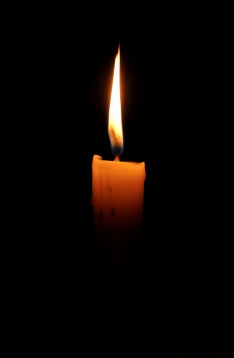
Ambience!
And so it went. King George himself visited the property at one point, and woke up to find the lady standing over his bed, hair disheveled, eyes wild. He fled immediately, swearing to “not spend another hour in the accursed house, for tonight I have seen that which I hope to god I never see again.”
Now we come to the famous photograph. In September 1936, London-based photographer Captain Hubert A. Provand visited Raynham Hall along with his assistant Indre Shira with the aim of capturing property photos for Country Life magazine. According to their account, they were setting up a photo of the stairway, Provand with his head under the camera’s fabric, when Shira spotted a vapoury form coming at them down the stairs. He cried at Provand to take the shot. The photo that resulted is the one that the world wonders at today.
Since then, the Lady has not been seen much. Doubt is back in style. People maintain that the Country Life photograph could be easily faked–that there is damning evidence of double exposure and maybe even prop placement with a Madonna statue. I could also point out that Marryat’s story was doubtless exaggerated–not only did Marryat write fiction himself, but his daughter (who wrote the passage I quoted above, which is often quoted by people telling the story of the Lady) also wrote sensational novels, in addition to being an ardent Spiritualist. Between the two of them, it would be hard not to embellish.
Still, Dorothy Walpole’s legend has a nice ring to it, and has survived the better part of 300 years. The current owner of Raynham does not believe the photo was a fake. When asked about his infamous relative, he simply replied: “She isn’t there to haunt the house but she is still there, I know she’s there and I’m glad she’s around.”
What’s the most terrifying thing you’ve ever taken a photo of? Share your story in the comments below.
All images–except that the candle–were pulled from Wikimedia Commons and are in the public domain. The candle photo is by Paolo Costa Baldi [CC BY-SA 3.0], also from Wikimedia Commons. Featured image by Kenan Süleymanoğlu on Unsplash.
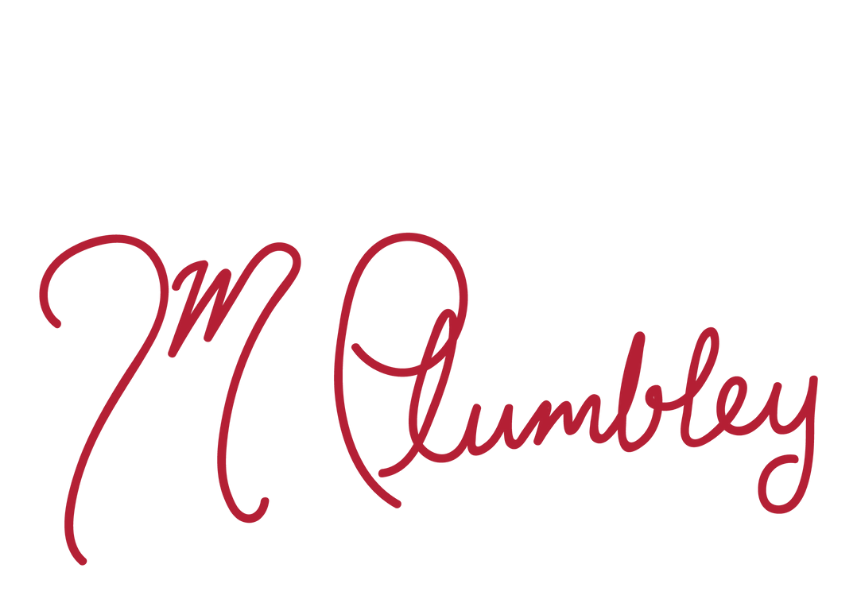




0 Comments